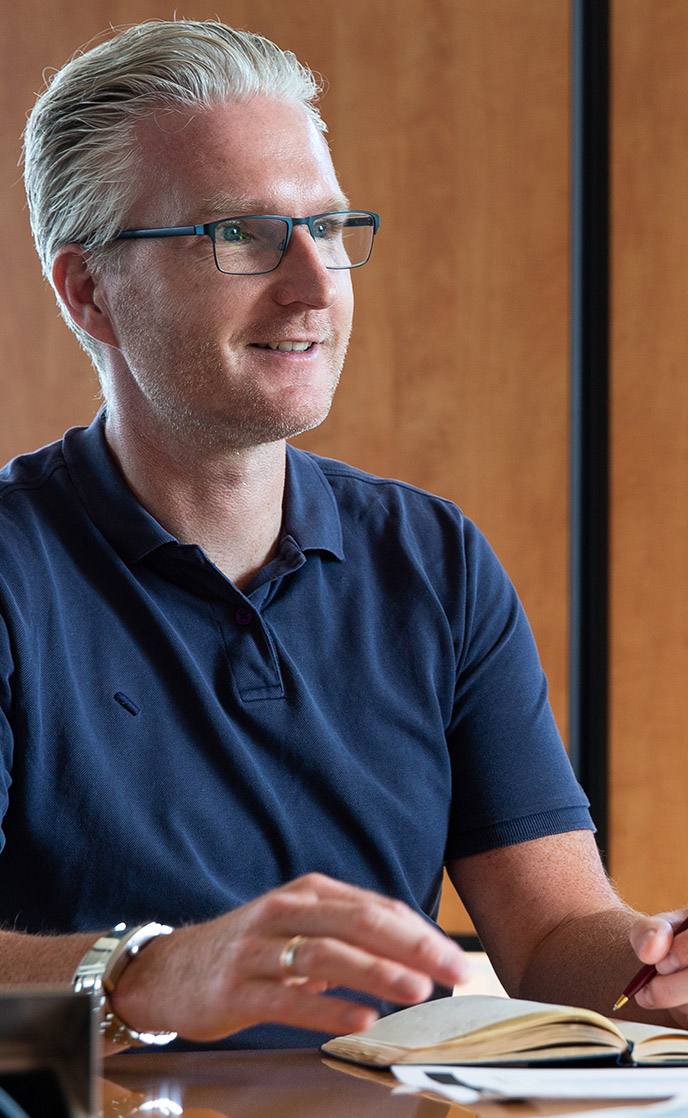
A nine-step approach for effective leadership during (and after) crisis
There are countless theories on crisis management, crisis leadership and quotes about how we
should manage ourselves and our organization during perilous times. If anything, the Covid-19 crisis has been the
ultimate test thus far to see how we managed in crisis situations.
The result? Besides the dramatic drops in consumer spending and high levels of unemployment in some industries,
the perhaps most remarkable result is what has come to be known as “The Great Resignation,” the fact that more
employees than ever before have voluntarily left their jobs, thereby causing a second crisis for many companies.
Of course, it can be argued that the lack of effective leadership cannot fully account for this result. Yet, if
we look at companies who have managed to survive and even thrive during crisis situations, a certain pattern
does occur. Companies that are winning are companies that kept their head cool and maintained a progressive
outlook on the industry—before, during and after crisis.
A nine-step approach for keeping a cool head
A virus is certainly to be taken seriously. And it is quite natural that it causes a lot of anxiety, uncertainty
and even outright fear. But panic doesn’t bring us anywhere. Especially because the situation is so serious, a crisis
like Covid-19 requires us not to panic and to keep a cool head. Not to pretend that things are not as bad as they seem,
but to respond effectively and deal with the situation. While this is essential for everyone, it is particularly
important for anyone taking a leadership role—in politics, companies, communities or any other place in society.
But how to do this? How to keep your cool when many people around your are panicking? Drawing from cognitive psychology,
martial arts, Saint Benedict, personal experience, and a wide range of other sources, the research for my book
"No More Bananas"
revealed that there are nine steps you can follow to get rid of your stress and reclaim your calm and confident self.
These steps are mostly targeted at creating long-term structural changes in your mindset and behavior. However, they can
also be applied to keep your cool in a crisis like the current crisis. Along the lines of these steps, this is what you
can do:
- Step 1: Calm down
The first step in a crisis like this is to calm down your mind. As social animals, we respond immediately if we see others hoard or show any kind of panicking behavior. The result is that we can’t think rationally anymore and, based on our primary instincts, follow the herd. To stop this, before you can make any further progress, you need to calm down. The way to do this is to shut off the noise and notifications and drastically reduce your information intake. So, do stay informed about Covid-19 developments e.g. twice a day, but don’t get absorbed in all the news about it—especially the conspiracy theories. Instead, go to a quiet place and do nothing a couple of times a day. - Step 2: Let go
Your next step is to stop trying to control the many things that are beyond your control and stop worrying about things that you cannot influence. Of course this is easier said than done. It might help to realize that whatever keeps you busy are your thoughts about the events, not the actual events. And even though you cannot control the events, you can control your thoughts. So, let go and accept that things are different and uncertain for a while. This will help you free enough brain space to start focusing on that what you can influence. - Step 3: Take responsibility
Once you have calmed down a bit and let go of the things you can’t control anyway, the next step is that you take responsibility for what you can do. This includes taking responsibility for everything you can do to not get or spread the virus such as washing hands, keeping a distance and staying at home. But it also includes taking responsibility for your own mental response. You can only make further progress if you accept that there is nothing and no one else to blame and that you are the only one responsible. - Step 4: Dethrone yourself:
People only panic about things they hold for important. This means that another remedy is to make things—and yourself—less important. This means realizing that you are not as important as you think you are and that anything you do, say, feel, think or worry about isn’t so important either. The toilet paper panic is a good example. It suggests that people find wiping their butts one of the most important things there are. I would suspect that anyone reflecting on this would conclude that, perhaps, this is not really important at all. - Step 5: Build character
One of the reasons why people panic in response to the coronavirus is that it disturbs their finely crafted image of the controllable and comfortable world. Covid-19 bursts this bubble and shows us that many things are not as controllable as they seem. In many developed countries we have become “comfortably numb,” not used anymore to any significant challenges or uncertainties. That is what this fifth step is about. Build character by stepping out of your comfort zone and by doing things that you normally wouldn’t do or that others wouldn’t expect you to do. This includes having the guts to stay calm in the face of Covid-19. - Step 6: Detox yourself
If there is one benefit of the outbreak, it is that it helps people reflect on their daily routines and rat races. The coronavirus causes a hard stop and creates a naturally imposed moment of reflection. Accept this as a gift and use it to rethink what you were supposed to believe, aspire, say and do. Challenge your beliefs about yourself and use this to make a significant step towards a better you, a better situation for the people you are responsible for, and a better world. - Step 7: Get organized
Keeping a cool head in the face of crisis is easier when your life and your environment are organized. Clutter disturbs your mind, so get rid of it. Also, along the line lines of Step 6, the current situation gives you an opportunity to rethink how you work. Being forced to stay at home, many people now work from home, commute less or otherwise need to reorganize their daily lives. Some of this may be temporary, but this is at the same time an excellent opportunity to change and improve your way of working for the longer term as well. - Step 8: Think sensibly
Quite a bit of the unrest is caused by fake news and wrong information. Numerous fictions circulate about how to deal with Covid-19—such as that eating garlic would help or that taking Ibuprofen would be harmful. Companies like Google and Facebook are trying to filter out such information, but you can do something yourself as well. Of course, most of us are not experts and even the experts disagree, but we can use our ability to think rationally. To do so, you can put on your scientific hat and challenge what you hear and from which source it comes and start thinking sensibly. And get out of your filter bubble. - Step 9: Pay attention
The previous eight steps are meant to free your brain from the panic-inducing thoughts to allow you to think sensibly in the face of the coronavirus crisis. This enables you to make one more crucial step: pay attention. To others, to the things that really matter and to yourself. In this final step, you carefully and attentively monitor what is happening around and inside you using all your senses. This makes you focused on what you can and should really do in order to deal with the crisis—or otherwise.
When you are able to execute these nine steps in the current crisis, you have made a significant step forward in showing strong personal leadership. This, we can expect, will not only lead to more effective leadership behavior today, but also in the future. And not only for yourself, but also for others who look at you. Use this. To help you remember and apply the steps, here is a printable map of the Journey out of Bananaland.
Updating the Business Model Canvas: “The Strategy Sketch”
The Business Model Canvas (BMC), while a great addition to the strategy toolbox, also has its drawbacks. Which paved way for a new, more thorough model...
Read article
What organizational structure is effective? Use The Organizational Map
January 5, 2022 — 6 minute read
The organizational map helps you get an overall idea of the quality of your organization.
It also helps you identify where are its weakest points—and thus, where to start with making improvements.
Read article

The organizational map helps you get an overall idea of the quality of your organization. It also helps you identify where are its weakest points—and thus, where to start with making improvements.
Read article

I am Jeroen Kraaijenbrink and I have been consulting and mentoring CEOs and leaders in strategy affairs for over 10 years.
With my 20+ years venture as an academic in strategy and management theory, I've written several articles to improve your strategy,
management and organization.

I write articles bi-weekly on my newsletter.
Learn about relevant industry knowledge and strategy and leadership developments by subscribing to my newsletter.

